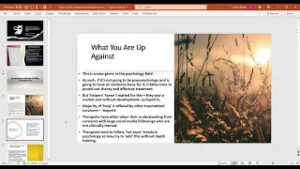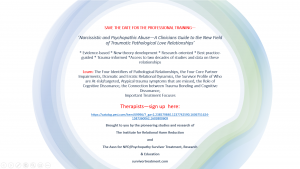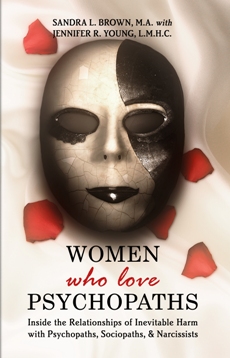by Sandra L. Brown, MA
It doesn’t take longer than five minutes into a break-up to know that having contact is not helping your recovery. I see lots of facebook pages and websites touting the benefits of ‘No Contact’ but the issue for recovery is far beyond merely ‘No Contact.’
The merits of ‘No Contact’ are obvious. It’s hard to retract yourself, rewire yourself, or recreate yourself when you are still having contact with the source of your traumatic injury – the pathological partner.
Let’s look at each one of these—
- Retracting—Moving out of the injury of pathological exposure is the first step that most people associate with ‘No Contact.’ You remove yourself from the presence of harm—harm physically but mostly the harm of the psyche that is exposed to that much relentless pathology. Retracting is almost a physiological reaction to the harm and enduring pathology itself—like recoiling into one’s safe space. So removing oneself is one way of moving into ‘No Contact.’
- Rewiring—‘No Contact’ is also to soothe the fight/flight/freeze patterns of trauma. It’s so that the adrenaline and cortisol can stop pumping and the brain can calm down. The neuro impact from pathological love relationships is very real (see the book Women Who Love Psychopaths, or Dr. Rhonda Freeman’s material on Neuroinstincts.com). Contact is perceived by the brain as threatening (even if it isn’t) and is autonomic, meaning it can quickly bypass the reason centers of the brain to become an automatic physiological trigger. Smells, sights, sounds, words, and memories are all vehicles for traumatic patterns of fight/flight/freeze that include emotions, neuro reactions, and physical reactivity. While you may think that speaking, emailing, texting, or seeing him is not likely to be ‘any worse’ than any other time you have seen him, trauma is an accumulative injury. Each exposure creates layers of trauma and each time there is exposure there are connections to memories associated with him. The cologne he is wearing, the shirt, the words, the tonality, the smirk, the smile, the glint in his eye—any or all of it can be the straw that breaks the camel’s back and causes the house of cards and all of its triggers to bring you to your knees. In fact, it is only a matter of time until that is likely to happen. ‘No Contact’ then becomes a necessity for traumatic symptom management so as not to expose yourself to more triggering effects of pathology. It helps to soothe the craving and pain centers of the brain that still ‘long for the pathological relationship (Dr. Rhonda Freeman).
- Recreating—‘No Contact’ helps to reassign the sense of self that has been wrapped in the one-ness of the relationship. Self is associational in a sense, that is, it is relational. We see ourselves through our loving connections to other. The injury to one’s self-perception or how you see yourself is one of the items that takes the longest to heal in recovery. You have to recreate how you see yourself and how you experience yourself. Much like grief when someone dies, you have to face the empty house, the empty bed, the empty coffee cup. You have to recreate the patterns of your life—what you do in the morning, after work, and on weekends. You have to recreate how you date and mate. The more contact you have the harder it is to extricate your sense of self from the sense of couple-ness. So ‘No Contact’ helps you to get on with the necessity of learning to see yourself without the pathological partner.
But ‘No Contact’ is just the beginning of your steps in recovery. First steps in recovery are to get your brain in a recovery condition that can guide and steer the rest of your recovery. If your brain doesn’t work, then it’s going to be even harder to get your emotions on board. Brain first, and the rest will follow which is why No Contact for re-wiring is foremost. But it is not merely not texting, calling or emailing that creates havoc with the brain. It’s why ‘No Contact’ is a first step but it is hardly the totality of recovery. You must proceed to disengagement.
Disengagement, as The Institute refers to it, is 2nd Step recovery. To help manage the pathology-exposed brain, to tame rumination, to calm intrusive thoughts, to not trigger fight/flight/freeze patterns is to disengage from things that stimulate memories, flashbacks, ruminations, trauma, and autonomic reactivity. What is the one thing that is related to memory/flashback/ruminations/trauma/autonomic reactivity? It’s the storyline related to the pathological love relationship.
The commonality of a trigger is the subject. Disengagement as an act of recovery and as technique for symptom management must include the disengagement from the pathological partner which includes the history, and its retelling, of the relationship.
Rumination occurs not only from the memory but from engagement with the subject which includes the compulsive need to talk about it, tell the story, seek validation, compare and contrast details of the events, or obsessively read other victim stories.
Survivors are compulsively driven back to the very item that gave them the traumatic injury. Discussed in Women Who Love Psychopaths, this can be related to traumatic replay or a dozen other defense oriented mechanisms. But just as in the saying “a dog returns to its vomit” survivors find ways of reengaging with the subject without ever having ‘contact’ again. This is an emotional loophole. And this is why it is not merely about ‘No Contact.’
When our clients are maintaining ‘No Contact’ but are still highly symptomatic, I ask how much ‘engagement’ they are having with the topic of pathology. Most tell me they have purchased every book on the topic, are on multiple social media sites about the topic, in chat forums, and have ‘support friends’ with the same issues whom they met online that they talk to by phone. Their phone pings every 5 minutes with a new article on ‘My Life with a Psychopath’ story. This is not disengagement. This is engagement with a deadly weapon.
I am honest when I say I am dismayed at the peer run websites and social media sites that are ‘validation’-only sites – that do nothing but post lists of symptoms of the survivor and behaviors of the pathological. Let me say sensitively, there is a fine line, especially in recovery, between understanding what happened to you, having your experience validated, and re-injuring yourself with the same trauma that harmed you.
In the beginning, many survivors don’t know what can happen with over exposure on these sites. If a little information is validating, than a lot must be utterly therapeutic. Nothing could be further from the truth! We have had emergency sessions with plenty of survivors who binged on peer sites which triggered a PTSD reaction.
Engagement in similar stories of the same type of trauma a survivor has experienced themselves, sets off the autonomic physiological reactivity—on comes anxiety, depression, flashbacks, intrusive thoughts, cognitive dissonance, hyper vigilance, sleeplessness and the worst – craving and longing. But ‘no pain, no gain’ – the information and inundation in the subject matter they feel likely hurts because it is so true. Your discomfort is normal because you are being triggered by the information.
Our clients are told that recovery is not merely about not contacting HIM, it’s also about not contacting the subject including story-telling sites or, as we call them, ‘sit and spin’ sites that are peer run and which allow people to just tell story after story of their pathological love relationship. They call this ‘validation.’ We call it a prescription for relapse and meltdown. The survivor spins their adrenaline and cortisol, stirs the agitated mind, and if that’s not enough, whoever is reading their story is also having the same reactions. Unguarded and unguided sites like these can do untold harm to those on the edge with anxiety, PTSD and complex PTSD.
Disengagement with the subject is far from not texting him, not driving by his house, or fly bys on his facebook page. It is disengagement in behavior related to the pathology subject so that the brain has time to catch up, slow down, and release its death grip attachment to the subject and memories. Behavior guides the brain.
Disengagement means the survivor has made a commitment to healthy forms of recovery –
- Including finding sites that are not ‘sit and spin’ sites. Instead, finding sites and groups that are run by mental health professionals with historical relevance in the subject.
- The survivor commits to choosing only behaviors that do not reactivate pain centers in the brain which includes not compulsively discussing the storyline with others who aren’t equipped to help them process the trauma—online or in person.
- Not reactivating pain centers by compulsively reading other survivor’s stories on websites, social media and forums. Even forums about this topic create the same neuro pathways for the pain center in the brain as did the pathological partner.
- The survivor finds alternative ways to getting pathology education information and trauma processing without re-traumatizing themselves through peers.
Dear survivors, ‘No Contact’ to help yourself retract, rewire, and recreate are great first steps. But to really rewire in a neuro recovery way means more than just not texting or talking on the phone. It means recreating a new self with a new outlook on what hurts and harms you in your own recovery and not choosing (again) overexposure to pathology oriented information that inflames the craving, longing, reward and pain centers of the brain.
(**If we can support you in your recovery process, please let us know. The Institute is the largest provider of recovery-based services for survivors of pathological love relationships. Information about Pathological Love Relationships is in our award-winning book, Women Who Love Psychopaths, and is also available in our retreats, 1:1s, or phone sessions. See the website for more information.)






